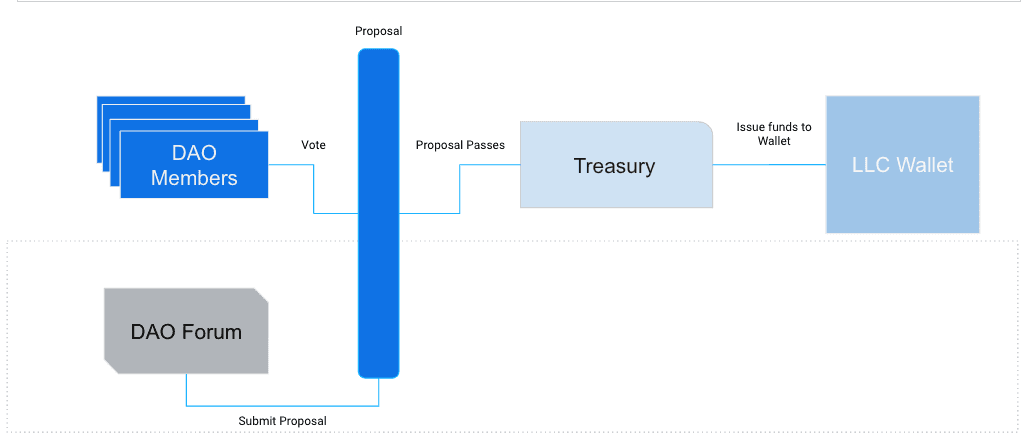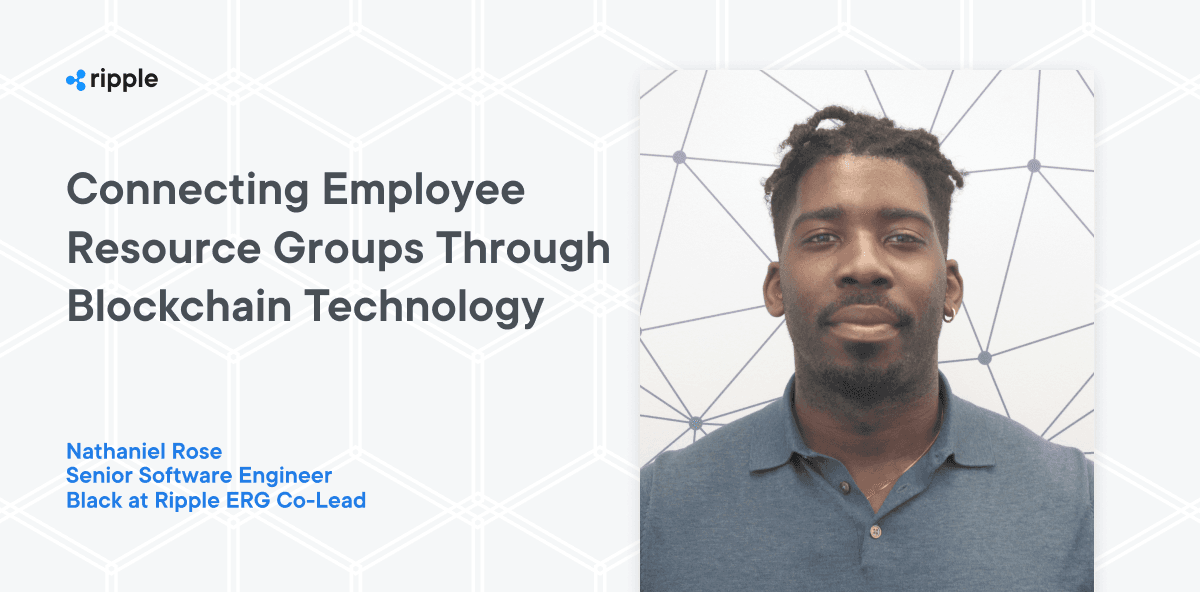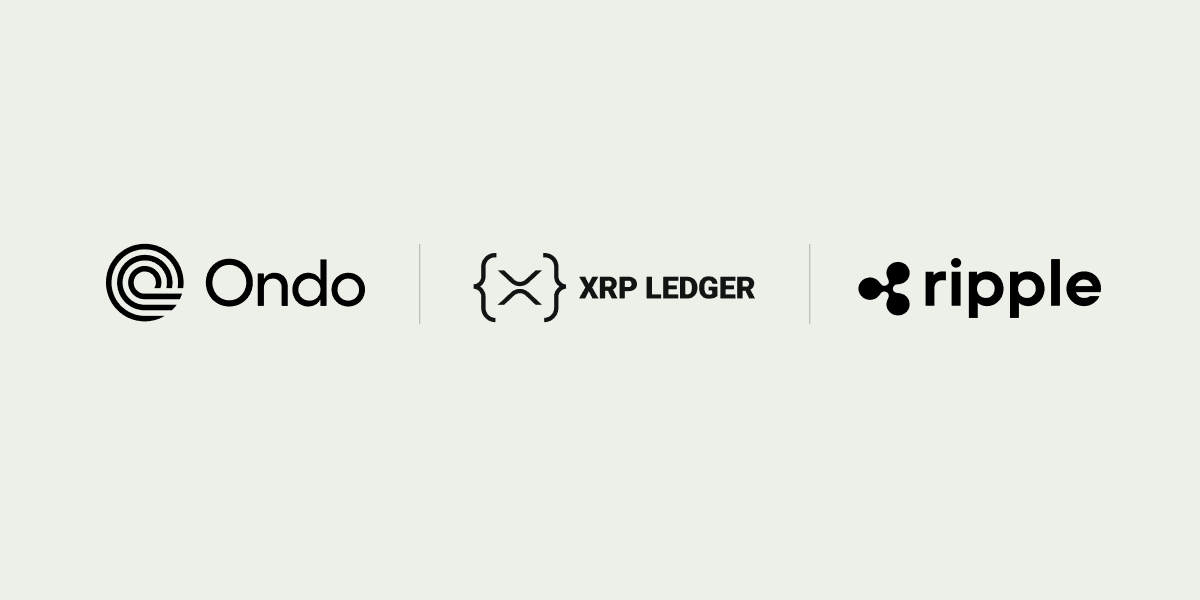Nate Rose, Sr Software Data Engineer, is bringing new meaning to intersectionality by applying blockchain technology to diversity and inclusion initiatives. As a co-lead for the Black at Ripple Employee Resource Group (ERG), Nate is always looking for new ways to elevate ERG programming and engage members in thoughtful conversation.
Over the holidays, his technical curiosity led him down the rabbit hole of blockchain-based Decentralized Autonomous Organizations (DAOs), and come February, he was hosting a company-wide discussion around the connection between virtual communities, DAOs and ERGs in honor of Black History Month.
Our interview with Nate dives deeper into DAOs and his vision for uniting global ERGs through cutting-edge blockchain technology.
What sparked the idea for the Black at Ripple DAO (B@RDAO)?
We sent out a survey to get feedback on what sort of content Black at Ripple members would like to participate in. We received an overwhelming interest in understanding how blockchain, crypto and DeFi are being utilized in the Black community, including topics around digital Black ownership, Black artistry and growing crypto market literacy within the Black community.
But my colleague, Mark Scott, and I decided to take a slightly different approach. We began exploring this emerging trend around virtual communities where individuals organizing around an idea or initiative work together as a collective to achieve some common goal. We were curious to investigate what happens when you try to convert a digital network—oftentimes grown out of something like a Twitter hashtag where members have never met before—and attempt to mature that into a global non-profit organization?
Black Lives Matter (BLM) is an example of a growing number of internet-native organizations that stemmed out of decentralized virtual communities. The BLM movement started from a Facebook exchange in the wake of the Trayvon Martin / George Zimmerman verdict and grew into a global network of social activism with individuals advocating for racial justice. This virtual, community-driven movement draws parallels to multiple recent grassroots paradigms like Occupy Wall Street, r/wallstreetbets, the Hong Kong protests and even the 2010 Arab Springs.
How can you continue to maintain flat-like governance of a virtual community as a 501(c)3? How do you provide transparency into an organization while still protecting the privacy of your network? This seemed like a compelling problem and we used that premise to draft ideas around how DAOs can be used in this instance. So we built an internal learning workshop around it.
How would you describe a DAO to a beginner?
I’m still quite new to the concept but this is the explanation that resonates with me.
DAO stands for decentralized autonomous organization:
Decentralized means there is no central leadership and an organization conducts itself as a more bottom-up structure.
Autonomous implies a switch from traditional bureaucracy to transparent regulations where management and policies are handled through democratic computer processes.
Organization signifies an internet-native entity that can reflect a project, virtual community, business or consortium.
A DAO utilizes “smart contracts” as governance through computer code that is coupled to auditable transactions on a blockchain network. A team would predefine how the org would be governed with coded policies like voting quorum, proposal handling, new membership, budget and other administrative logistics. That code would get deployed onto a network and, though immutable, can be upgraded and modified later with respect to the voting policy. An organization could then issue out voting tokens for the DAO, and members of that org could vote on proposals with a monetary value coupled with their vote. If the proposal passes, the incoming funds could be distributed to a wallet on the network to carry out the proposal.

How can DAOs help strengthen ERGs and underrepresented communities?
I came across a great Tech ERG Summit produced by the Kapor Center and Five-to-Nine organizations. They united different ERGs across large tech companies to discuss how to increase ERG impact within their respective companies. Some recurring issues experienced holistically by underrepresented ERGs concern recruitment, retention, visibility, external community investment, low influence at highest levels of the organization and limited growth opportunities for their members.
A DAO could be used as a platform similar to a summit, providing a decentralized structure that could enable collaboration amongst ERG members to help mitigate these issues.
This proposal for a solution to migrate communities typically formed at summits and conferences to virtual communities governed as a DAO is a work in progress. As with any emerging tech, DAOs have their own known vulnerabilities, including susceptibility to malicious attacks, governance takeover, and fraudulent activity within the org. As best practices and more regulatory guidance from local governments are released, the implementation of DAOs and their advantages will become clearer.
Why do you think diversity and inclusion (D&I) efforts have become more important in the workplace in the last few years?
Company commitment to D&I is expected now. Roughly 90% of Fortune 500 companies have ERGs as extensions of their D&I initiatives. Today, it’s detrimental NOT to have workplace programming around D&I. Aligning commitment with bold, radical programming — addressing matriculation into tech from underrepresented groups, using diverse vendors, assuring growth opportunities for internal employees of different demographics — is more interesting and productive.
There’s a higher demand for more equitable workplaces after COVID-19 surfaced several blatant issues that drastically affect certain demographic communities more than others. The pandemic disparately harmed low-income households, school closures disrupted parent work-life balance, lockdown with remote work impacted our mental health, and racial unrest raised high concerns regarding safety for different demographics – specifically the Black and Asian communities here in the States.
D&I initiatives need to reflect the times and adjust for the current climate to empower employees accordingly.
What is the objective of the Black at Ripple ERG?
At Black at Ripple, we prioritize supporting members to leverage identities in the workplace including fostering allyship, celebrating cultural diversity with intersectionality and driving alignment with the broader Black community on behalf of Ripple. I co-lead Black at Ripple along with my colleagues Safiya Walker & Jared Vallair.
Is there a recent career milestone you’re most proud of?
Switching industries to a crypto solutions company, getting certified in the Google Cloud Platform, completing a graduate research degree and owning one of the first Jean-Michel Basquiat NFTs—all in the last two years. And all during a pandemic.
What excites you about working in Ripple’s “virtual community” every day?
Blockchain technology is constantly evolving and new use cases in Decentralized Finance (DeFi) are surfacing daily. Working at Ripple where I bring my software engineering skills and best practices to enable matured implementations for blockchain and crypto technology is what I enjoy most about my role. Additionally, you meet some eclectic talented characters working in this virtual community. An ex-quantum physics researcher, part-time election campaign analyst, and professional poker player – all Ripple employees.
If you’re interested in joining Nate, check out our careers page or tune in to his interview on UBRI’s “All About Blockchain” podcast.







